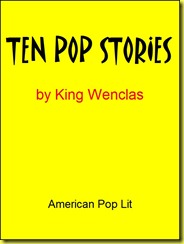Creative writing profs teach students to value above all else the sentence. This is like valuing most of all the bricks when building a house. High quality bricks are a good thing, but if you put them together the wrong way, the house becomes a disaster.
Creative writers craft nice-sounding ornate sentences, then pile them together one upon the other, creating a misshapen wall. The bricks are too large and unwieldy. They don’t fit together. When looking at the house you notice the bricks. “Yes, those are outstanding bricks,” you say. “But the house is ugly.”
You’re not supposed to notice the bricks!
Look at an approved essay by noted literary writer Lorrie Moore, “Double Agents in Love.” The essay appeared in New York Review of Books, an esteemed review periodical. The essay’s not about a book, but a TV show.
http://www.nybooks.com/articles/archives/2013/feb/21/homeland-double-agents-love/?pagination=false
Note the first paragraph:
“One of the intriguing aspects of the gripping and widely praised Showtime drama Homeland, a story about the machinations of CIA counterterrorism analysts and their prey, is that it is fearlessly interested in every kind of madness: the many Shakespearean manifestations—cold revenge, war-induced derangement, outsized professional ambition—as well as the more naturally occurring expressions, such as bipolar disease and simple grief. Homeland ruthlessly pits these psychic states against one another in different permutations and settings, like contestants in The Hunger Games, to see which will win, which will die, which will kill or be killed, which will bond or marry or breed or starve.”
This entire paragraph consists of two sentences! The first paragraph—when Lorrie Moore should be getting the reader into her essay as quickly as possible. The paragraph is a brick wall.
Moore asks too much of her two sentences. Six or seven subjects are revealed in the first sentence, depending on how you add them up. In the second sentence, Lorrie Moore leaps to a questionable idea—that psychic states can win, die, breed, and so on.
Look at the unwieldy, ornate sentences. This is word clot.
The sentences don’t move. They have no pace. Worst of all, they lack clarity. What exactly is Lorrie Moore talking about?
You have to stop and read the sentences over twice. Reading becomes a duty. The last time you were this bored was in a college course on semiotics!
You plunge on. (You’re committed to writing a blog post on this shit.) The second paragraph is as bad. Maybe worse.
Eventually the essay begins to make sense. Only because I’d determined to write a blog post about the essay would I have continued. 98% of the general public wouldn’t have bothered.
New York Review of Books doesn’t care about the 98%. Their task is to be as exclusively unapproachable as possible, so they retain intellectual snob appeal. So they employ writers who could write more clearly if they wanted to, but instead prefer stringing together unwieldy and ornate sentences. Showing off.
The reader? The reader will take what he’s given and like it.
The dilemma of New York Review of Books is this: Because the books and authors they like don’t connect with the public, to be at all relevant—to retain even two percent of the public—they’re stuck publishing essays about TV shows.
